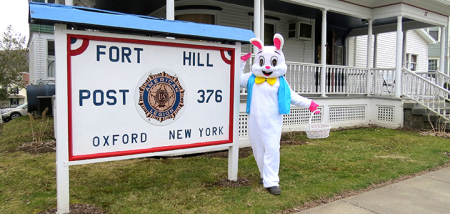Tilting At Windmills: Beloved Paper
Published:
October 28th, 2022
By:
Shelly Reuben

Last night, I was hunched over Charlotte Brontë’s novel Jane Eyre, enjoying the pleasant feel of the heavy tome on my lap. I had come upon the book years ago in an antique shop Upstate New York, snatched it off the shelf, and paid for it. If it hadn’t been for sale, I probably would have stolen it.
Printed in 1943, the paper has oxidized over the years and become a lovely shade of ... I’m not sure a word exists to describe the creamy color of those gently aging pages. If the book had ever possessed a dust jacket, it is long gone. However, printed on the thick cardboard front is an unforgettable image of a long line of orphans, two in each row, all emaciated, and all wearing dark dresses. They move from the top of the book cover to the bottom, hands clasped modestly before their bodies, eyes downcast, and hollow expressions on their faces.
One of the orphans, of course, is Jane Eyre.
This cover illustration, as well as additional wood engravings throughout the book, were created by Fritz Eichenberg, an artist who fled Nazi Germany in 1933, settled in New York City, and illustrated books written by everyone from Dostoyevsky to Edgar Allan Poe.
And, of course, both Brontë sisters.
All of his engravings for Jane Eyre are evocative, ponderous, and sad.
I was on page 222 in the novel, where our heroine discovers that Mr. Rochester had lied to her: “I would not ascribe vice to him; I would not say he had betrayed me: but the attribute of stainless truth was gone from his idea; and from his presence I must go.” My eyes started to flutter with fatigue. My head began to nod. And just as I was about to set my book aside for the night, an unexpected thought popped into my head.
“Paper,” I mused. “This book is made of paper.”
Then my mind segued (don’t ask why) into other things made of paper that I cherished, needed, or loved. I started to make a list.
Starting with bathroom tissue and facial tissue – can’t live without them. Can’t substitute them with anything made of recycled golf balls.
Next came newspaper. One can read The Wall Street Journal or The New York Times on-line, but nothing is as heaven-on-earthly as reading a real newspaper made of real newsprint, accompanied by a big cup of coffee. And if it’s take-out coffee, that, too, is often in a paper cup!
Paper. Paper. Paper.
Gift wrap to make packages pretty.
Boxes to hold cardboard push-through tabs of allergy medications.
Matchbook covers containing rows of paper matches.
Legal pads – preferably narrow ruled – on which to write, in longhand, articles, stories, books, and poems. Where would I be without them?
Twenty-pound bond (purchased in boxes of ten reams) for the second, third, and fourth drafts of my literary output. After I type a manuscript into a computer, I print out what I have written, and scribble my editorial corrections on hard copies of each page.
Wall calendars. I know. I know. Most people keep track of their schedules on a computer. But not me. I love to fill in those little day-of-the-week boxes on their decorative flip-month pages.
Moving on to...
A small leather-bound address book into which I record contact information for friends and acquaintances. I used to have a plastic digital device made for this purpose that I kept in my purse. Then one day, for no accountable reason (I didn’t drop it in the ocean or stick it in a microwave oven), all of my data magically disappeared. Since then, if I want to know where someone lives or how to get in touch with him, I write it down with a pen in small letters on the narrow slots of my small paper address book.
Other paper products I cannot do without include photographs; sketch pads; pan liners to make cupcakes; wallpaper (with huge pink roses on a yellow background); decks of playing cards; paper towels; napkins; grocery and shopping bags; wet wipes; coffee filters; mailing cartons; milk cartons; paint samples on narrow strips that look like bookmarks; wedding invitations, price tags; greeting cards; postcards; Post-It notes; pretty stationary for writing love letters; business cards; index cards; manila folders; postage stamps; sandpaper; paper currency; admission tickets to movie theaters; lottery tickets; bank checks; money orders; diaries; journals; pizza boxes; and ... lest we forget our celebratory occasions ... confetti!
Much as I use and want to continue using these innumerable paper products (as well as many more I haven’t mentioned), my two favorites are, of course, books and newspapers. By which I mean books and newspaper made from wood pulp that is the product of a living, breathing tree. The kind Joyce Kilmer exalted in his sickly sweet poem about “A tree whose hungry mouth is pressed, against the earth’s sweet flowing breast.”
That poem.
And Yes. Those trees.
The ones celebrity protestors sit in and from which they scream unsavory epithets at lumberjacks (until they have to go home, blow their noses on Kleenex and avail themselves of personal paper bathroom products that shall not be named.)
All of which brings us to why I am writing this paean to paper.
When I was in high school, I often found a way to sit at the table in the lunch room with the weird kid who was being shunned or snubbed. Because, when I saw someone nice or harmless being picked on, I would have lost respect for myself if I hadn’t done something to defend them.
And that brings me back to paper.
Fact is, I had never really thought about paper products before, and I probably wouldn’t be doing so now ... if I weren’t currently reading a 1943 Random House edition of Jane Eyre ... if I hadn’t begun to stroke the pages (like the fur on an angora cat) ... sniff the pages (like the petals on roses) ... flip through the pages (to scrutinize Fritz Eichenberg’s illustrations) ... and come to the conclusion that I loved the damn book.
A single book, mind you, like billions of others that exists on paper. Not the electronic kind that floats around like dust motes in some mysterious digital ether. A book I can hold in my hands. One created from the physical remains of a tree that was killed for the kind of materialist capitalist purpose that I also adore.
This isn’t a Ph.D. treatise on the lumber industry, but just for the fun of it, I looked up “Tree and Wood Facts” published by the North American Forest Foundation, and learned that:
By the year 2020 “the softwood industry was able to plant 3 new trees for every one harvested in 2020.”
“Each year, the U.S. plants over 1 billion trees and Canada plants over 600 million trees. Both countries have spurred more than 50 consecutive years of net forest growth that exceeds annual forest harvests due to responsible forest management.”
“Since 2020, the softwood industry has supported more than 775,000 jobs, direct and indirect. These jobs are all a part of the lumber harvesting and manufacturing industry.”
And so on.
Bottom line, I love trees. They are beautiful. I personally, with my own little hands, planted over twenty in my front and back yards. But ... do I think that I shall never see, a book as lovely as a tree?
Probably not.
And rather than skulk off like a coward and mutely allow bullies to pick on the unpopular tree-harvesting industry in my school’s lunch room, I hereby sit at its table, and shout from the mountaintops (okay. Shout from my legal pad): I love paper.
So put that in your pipe and smoke it!
Copyright © Shelly Reuben, 2022. Shelly Reuben’s books have been nominated for Edgar, Prometheus, and Falcon awards. For more about her writing, visit www.shellyreuben.com
Author: Shelly Reuben - More From This Author
Comments









